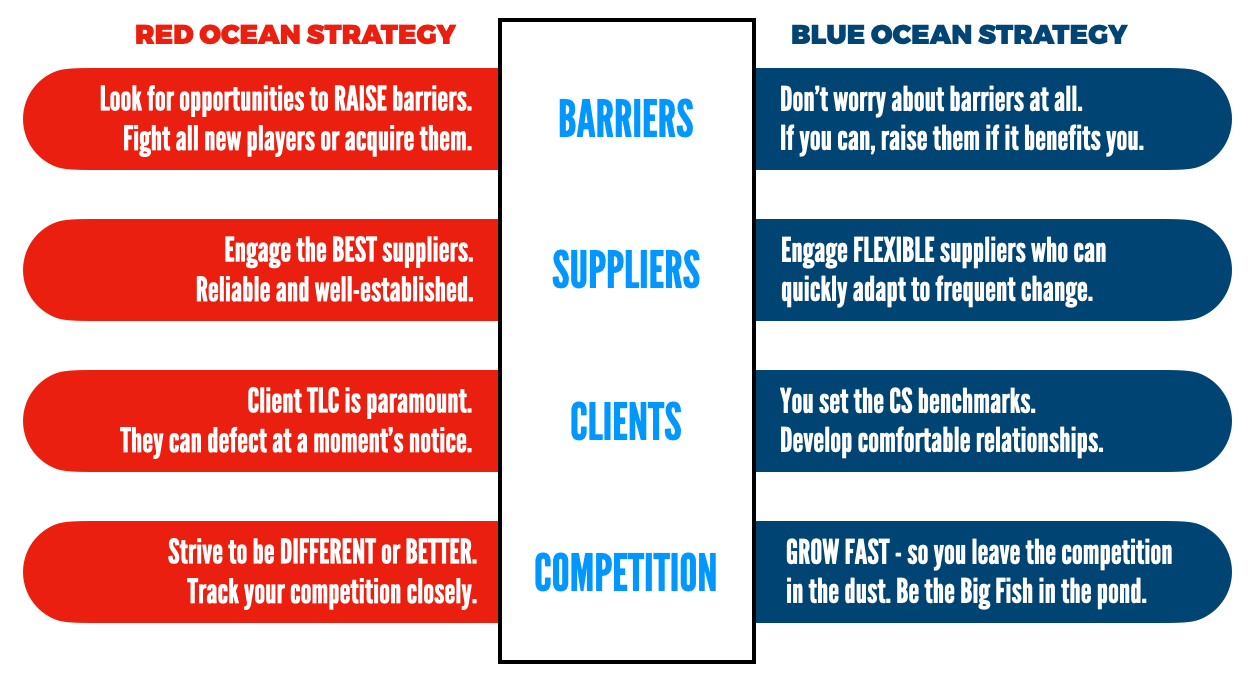Tool #5 - Red Ocean/Blue Ocean Strategy
This week, let’s understand how companies position themselves in the marketplace to succeed - The Red Ocean/Blue Ocean Strategy.
Summary:
Strategic moves create a leap in value for the company, its buyers, and its employees while unlocking new demand and making the competition irrelevant. They present analytical frameworks and tools to foster an organization's ability to systematically create and capture "blue oceans"—unexplored new market areas.
History:
Red Ocean/Blue Ocean is a strategy developed by W. Chan Kim and Renée Mauborgne, professors at INSEAD.
Description:
Red Ocean Strategy — Compete in an industry currently in existence and overcome an intense level of competition. This involves the commoditization of the industry where everyone is competing primarily on price — the key goals are to beat the competition and exploit existing demand. Great examples of Red Ocean companies are McDonald’s and Southwest Airlines.
McDonald’s is in a fiercely competitive fast-food industry with aggressive discounts, new product variations, and high-profile commercials. They offered consistent, superior-quality burgers and virtually invented the drive-thru.
Southwest is the only large, low-cost airline that hires friendly and approachable employees who have a passion for helping customers. In addition to their pricing, cancellation, and service structure, no other airline comes close.
Blue Ocean Strategy — Make The Competition Irrelevant — create demand not currently in existence, rather than fighting over it — a new marketplace that hasn’t been explored/developed. Many blue oceans are created within red oceans by expanding existing industries into areas not yet imagined by your competition. Great examples of Blue Ocean companies are Apple and Netflix.
Apple always aims to set itself apart from competitors not by price but by competitive advantages based on product design that attracts customers. With the iPod in 2001 and iPhone in 2007, they didn’t just create a successful product, they created a new category of product. This made the competition irrelevant and we saw Nokia, Blackberry, and Motorola virtually disappear.
Netflix entered a high-growth market of renting movies but took a different tack — mailing DVDs to customer homes instead of building brick and mortar like their main competitor, Blockbuster. Ultimately, they moved into streaming and have held onto the mantel for many years — but in the past year have seen their momentum strangled by other competition stealing market share.
Application:
To venture into a Red Ocean Strategy:
Barriers: Look for opportunities to raise your barriers to entry. Fight all new players or acquire them.
Suppliers: Engage the best suppliers in the industry who are reliable and well-established.
Clients: Client TLC is paramount, they can and will defect at a moment’s notice.
Competition: Strive to be different or better and track your competition closely.
To venture into a Blue Ocean Strategy:
Barriers: Disregard your barriers — if you can, consistently raise them if it benefits you.
Suppliers: Engage with agile and flexible suppliers who can quickly adapt to frequent changes in your needs.
Clients: You set the customer service benchmarks in your industry — develop comfortable relationships with clients.
Competition: Grow as fast as possible and leave the competition in the dust. Be the Big Fish in the pond.
Additional Resources:
Blue Ocean Shift: Beyond Competing - Proven Steps to Inspire Confidence and Seize New Growth

